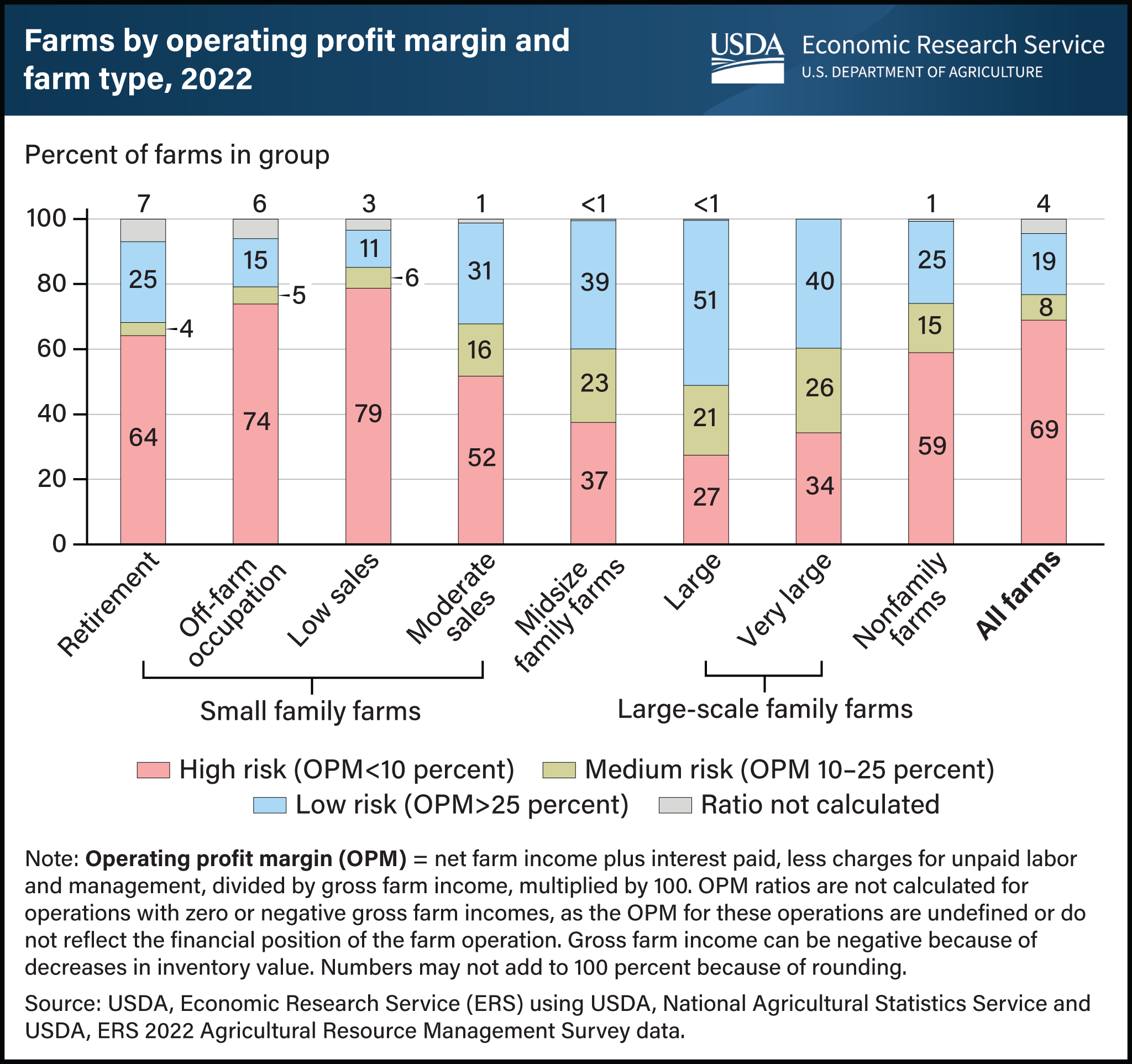Most small family farms are at high financial risk based on operating profit margin
- by Katherine Lacy, Christine Whitt and Katherine Lim
- 1/23/2024

Small family farms were more likely to have greater financial vulnerability than other farms, according to data from the 2022 Agricultural Resource Management Survey (ARMS). Researchers with USDA, Economic Research Service (ERS) calculated the operating profit margin (OPM), one of many financial risk measures, by taking the ratio of profit to gross farm income to find that in 2022, between 52 and 79 percent of small family farms—depending on the farm type (retirement, off-farm occupation, low sales, moderate sales)—were at the high-risk level. If OPM is less than 10 percent, the operation is considered at high financial risk. When OPM is between 10 and 25 percent, the operation is considered at medium financial risk, and if OPM is above 25 percent, the operation is at low financial risk. A majority of small-scale family farms, which have a gross cash farm income (GCFI) of up to $350,000, earn most of their income from off-farm sources. For these farms, farm profitability is not necessarily essential to the survival of the household. Small family farms make up 88 percent of all farms but account for only 19 percent of the total value of production. Large family farms (GCFI of $1 million to $5 million) in 2022 were most likely to have low financial risk at 51 percent and least likely to be at high financial risk at 27 percent. Midsize farms (GCFI of $350,000 to $999,999) were also most likely to be in the low-risk zone at 39 percent and least likely to be in the medium-risk zone at 23 percent. This chart appears in the ERS report America’s Farms and Ranches at a Glance, published December 2023.

